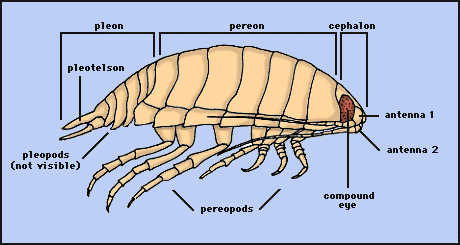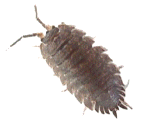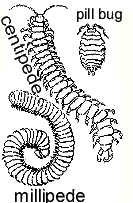Animal Behavior
| AP Lab 11 |  |
Introduction:
Ethology is the study of animal behavior. This involves observing an organism’s behaviors, interpreting what is observed, and research different organisms. Ethologists study and observe an organism’s reaction to the environment around them.
Biotic and abiotic factors are limiting factors that control the maximum size of a given population. Favorable conditions are desired by an organism of its home environment. Because of this, an animal must search for the environment to fit its structure and lifestyle. This is called habitat selection.
An animal can display many different types of behaviors, two being taxis and kinesis. Taxis behaviors are deliberate movements toward or away from a stimulus. Kinesis is a random movement that is not oriented toward or away from a stimulus. Taxis behaviors are exemplary of the physiological needs of an organism. Other behaviors are agonistic, aggressive or submissive actions toward another organism; or mating behaviors.

To observe animal behavior in this lab, isopods will be isolated in a controlled environment. Isopods, more commonly known as pill bugs, are crustaceans with a hard exoskeleton, seven pairs of legs, and antenna.
Drosophila embryos develop in the egg membrane. Once the egg hatches, the new larva emerges and feeds on the medium. The larval stage has three instar stages. After undergoing all these stages, the larva molts and becomes a pupa. The pupa pupates and emerges as an adult fly. A fly reaches adulthood about two weeks after hatching, and lives as an adult for only two weeks.
Materials:
The following materials will be needed to complete the experiment: 10 pill bugs, hydrochloric acid solution 1%, potassium hydroxide solution 2%, 1 animal behavior tray, 2 pieces of filter paper, 1 camel’s hair brush, 1 magnifier or a dissecting microscope, and masking tape.
Procedure:
a) First, place the 10 pill bugs into the animal behavior tray and take general observations of their movement and interactions for at least 10 minutes. Make a list of the data you have collected. Sketch a drawing of the dorsal and ventral surfaces of an isopod and label any recognizable structures.
b) Now, label one side of the behavior tray A, and the other B. Place five pill bugs on each side and for 10 minutes record how many are on each side of the tray. Make observations each minute for 10 minutes. Record this data in a table. Calculate the average number on each side of the tray during the 10-minute period. The taxis behaviors have just been recorded.
c) Next observe pill bugs in an altered environment. Using a chemotaxis, the behavior of the organism should differ from the last part of the experiment. A chemotaxis is the orientation of an organism in relation to the presence of a particular chemical. Remove the pill bugs from side B of the tray. Lay a piece of filter paper moistened with 1% hydrochloric acid solution over the surface of the tray.
d)Now allow the pill bugs to roam freely through the tray and observe their behavior. Starting with five pill bugs on each side of the tray, make note of the number of pill bugs on each side of the tray every minute for five minutes. Make a table to show the data collected.
Data:
a) General Observations
-The larger pill bugs climbed over the smaller sized ones.
-Movement mostly around edges of tray.
-Legs move in quick, fluid motion.
-Use antenna to sense closeness of other isopods.
-When flipped on back side, will kick off from ground or other pill bugs to flip back over.
-Seven pairs of legs.

Table 1 Pill Bug Taxis
| Time (minutes) | Number of Pill Bugs in Side A | Number of Pill Bugs in Side B | Observations |
| 1 | 8 | 2 | All moved to one side, then to the other |
| 2 | 5 | 5 | Climbing on top of one another |
| 3 | 4 | 6 | Some not moving; five in one pile along the edge |
| 4 | 1 | 9 | Most moved to side B, then less movement |
| 5 | 4 | 6 | Little movement then became more active |
| 6 | 2 | 8 | Still mainly on side B |
| 7 | 8 | 2 | Many moving slower |
| 8 | 8 | 2 | Separated out, less grouping |
| 9 | 6 | 4 | Slower moving |
| 10 | 7 | 3 | Large groups sitting with no movement |
| Average | 5.3 | 4.7 |
b) Experiment Information
Hypothesis: When a piece of filter paper moistened with a weak acid to one of the sections of the tray, the pill bugs will move into the acid-free area and stay away from the acid.
Design: A small amount of a weak acid will be dropped onto filter paper and placed on one side of the behavior tray. Five pill bugs will be put on each side and reading on the number of pill bugs on each side will be taken every minute for 10 minutes.

Data: Table 2
Pill Bug Taxis with Altered Environmental Condition
| Time (minutes) | Number of pill bugs on side A | Number of poll bugs on side B (side with acid) | Observations |
| 1 | 7 | 3 | Some backed away when they sensed the acid |
| 2 | 4 | 6 | More mobile on side with acid (side B) |
| 3 | 3 | 7 | Ones on side A not as active; not moving much |
| 4 | 2 | 8 | Less movement; not very active |
| 5 | 4 | 6 | Little movement on side B |
| 6 | 1 | 9 | Sitting against wall in group |
| 7 | 2 | 8 | Not very active on side B |
| 8 | 0 | 10 | Most not moving |
| 9 | 0 | 10 | Only one active |
| 10 | 0 | 10 | Barely any movement |
Questions:
1) Based on class data, what environmental conditions do pill bugs prefer?
The pill bugs seemed to like the acid and stayed in the area where the acid was concentrated.
2) How do you think pill bugs sense these conditions?
Isopods used their antenna in sensing these kinds of alterations in the environment.
3) Are there any results from Part 1 of the lab that would justify your hypothesis?
Pillbugs did not seem to be attracted to acid.
5) Would you find pill bugs in each of the following environments?
a) In a pine forest under a log – yes, pill bugs are attracted to acid
b) In a garden in northeast U.S. under a pile of straw – yes, pill bugs like dark places
c) Under a house in an arid part of Arizona – no, pill bugs like moist environments
Error Analysis:
No apparent mistakes were made.
Conclusion:
From this experiment, the behaviors of isopods were observed and investigated. Through the acid test, it was found that the pill bugs found the acid desirable and stayed in areas with it. This proved the hypothesis that was stated was incorrect.
